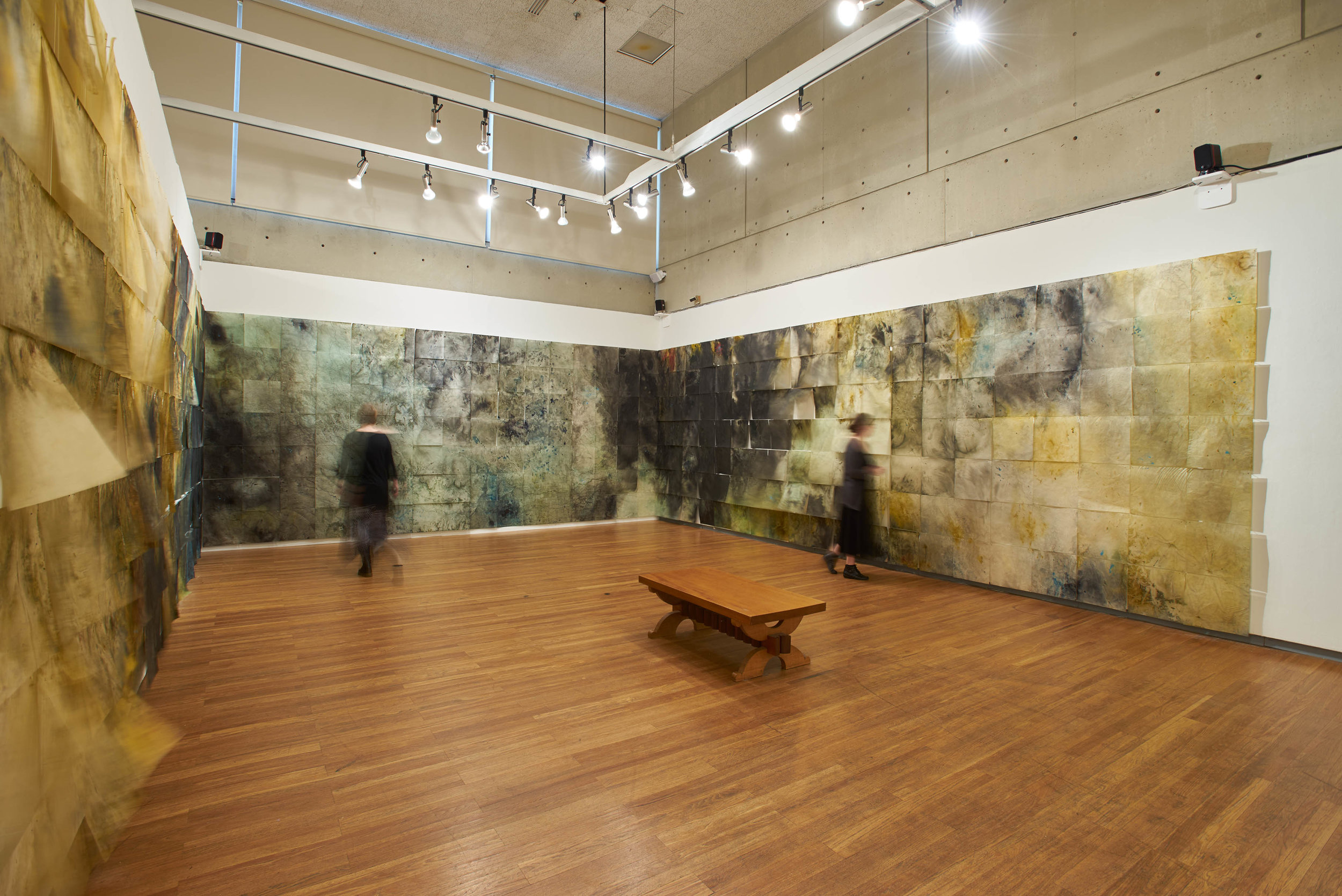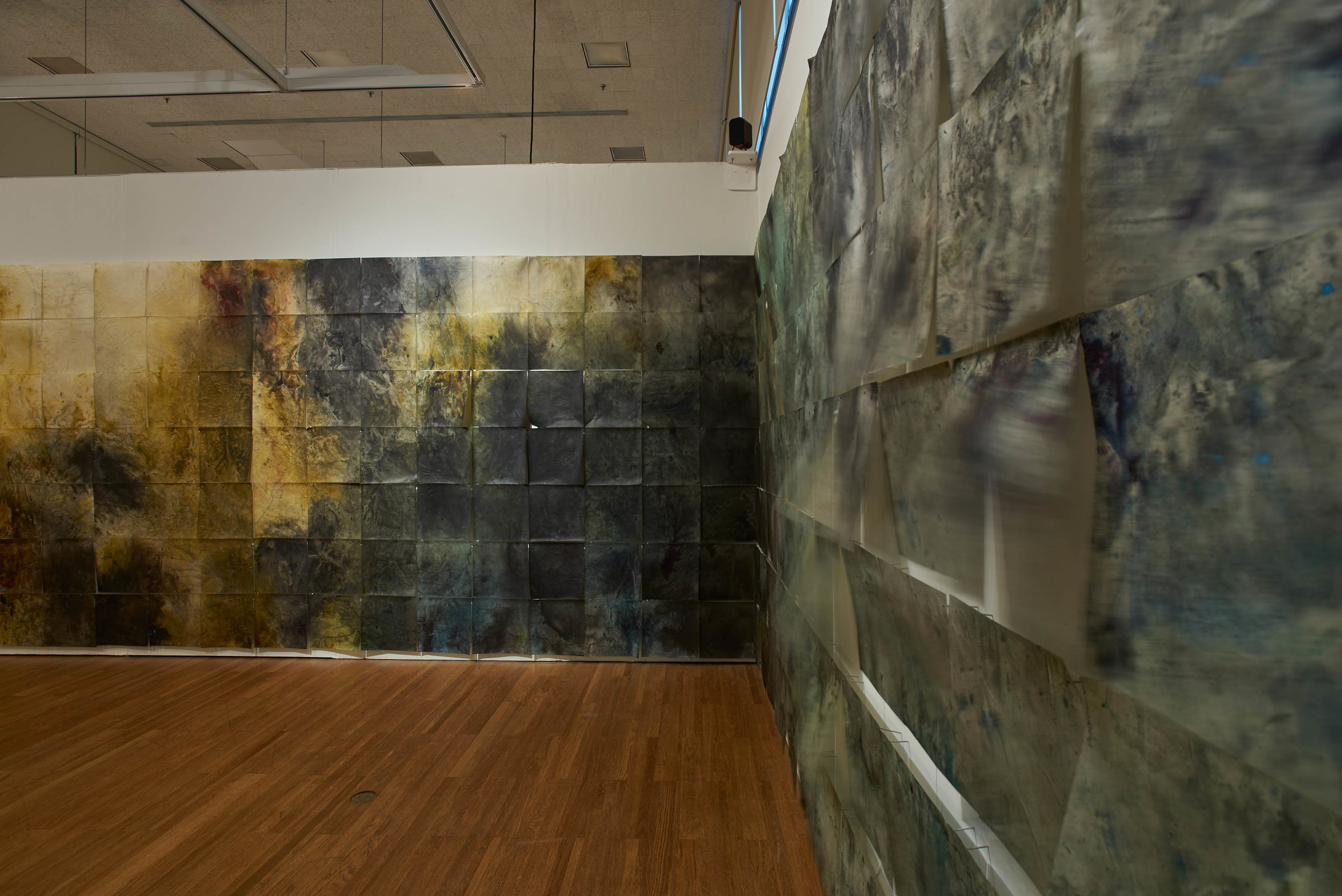January 7 - February 26, 2017
Artist Reception Friday January 20, 12-2pm
This exhibition pieces together our physical and emotional relationships with places, which embed deeply in our identities. As human beings pass time within a place, they inevitably change the place itself. McMullen Gallery is filled with a room-sized installation made up of the print work of Kelsey Stephenson. Stephenson's work draws on connections to places meaningful to her, searching for how place creates and receives impact.
Stephenson’s mark-making process is intended to make the work feel as though it has existed for millennia. The forms are drops from pools of inky water, and traces of where they evaporated remain, leaving patterning and reticulation. They resemble waters’ passage through the world in the form of rivers and streams, highlighting water as a source of inspiration in the work. There is a duality to water’s impact as it gradually alters the landscape. Ice, soil erosion or storms may be unsettling, even dangerous, but we cannot live without water. Humans continually interact with the places they live – correspondingly transformative of their surroundings
The installation functions as both whole and fragments, exposing its own vulnerability to disruption. As visitors approach the piece the fragile paper is disturbed, making it move and rustle, allowing us to see the edges of the moving papers. Combined, the printed papers appear as a single piece resembling an aerial view of landscape. The fragility of the material and its constant motion suggest temporality, reflecting our own experiences of place as a series of fleeting and subjective moments. The exhibition shows the creation of many moments brought together in one place, informed by thoughts of desire, longing, and a search for completion.
The audio portion of embodied was created in collaboration with Alex Gray, a composition student from the University Of Tennessee School Of Music. When working on the piece, the artists talked about the addition of sound helping to immerse and transport viewers to another space or time, to further unify the fragments that are presented in the gallery. The audio composition draws on both water and wind as sources of inspiration. Sounds begin to suggest drops falling, or a deep rumbling becomes glacial ice breaking and grinding as it falls into liquid water below. Other parts suggest wind in open spaces, or periods of quiet.
Installation images/video from previous exhibition "divining" at University of Tennessee Ewing Gallery:
All images and video from http://kstephenson.ca/



